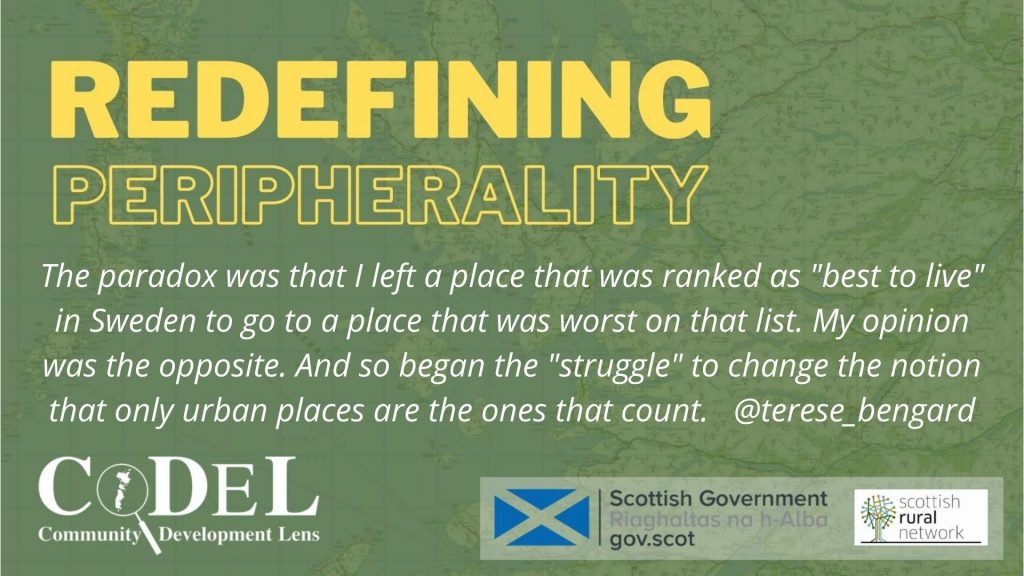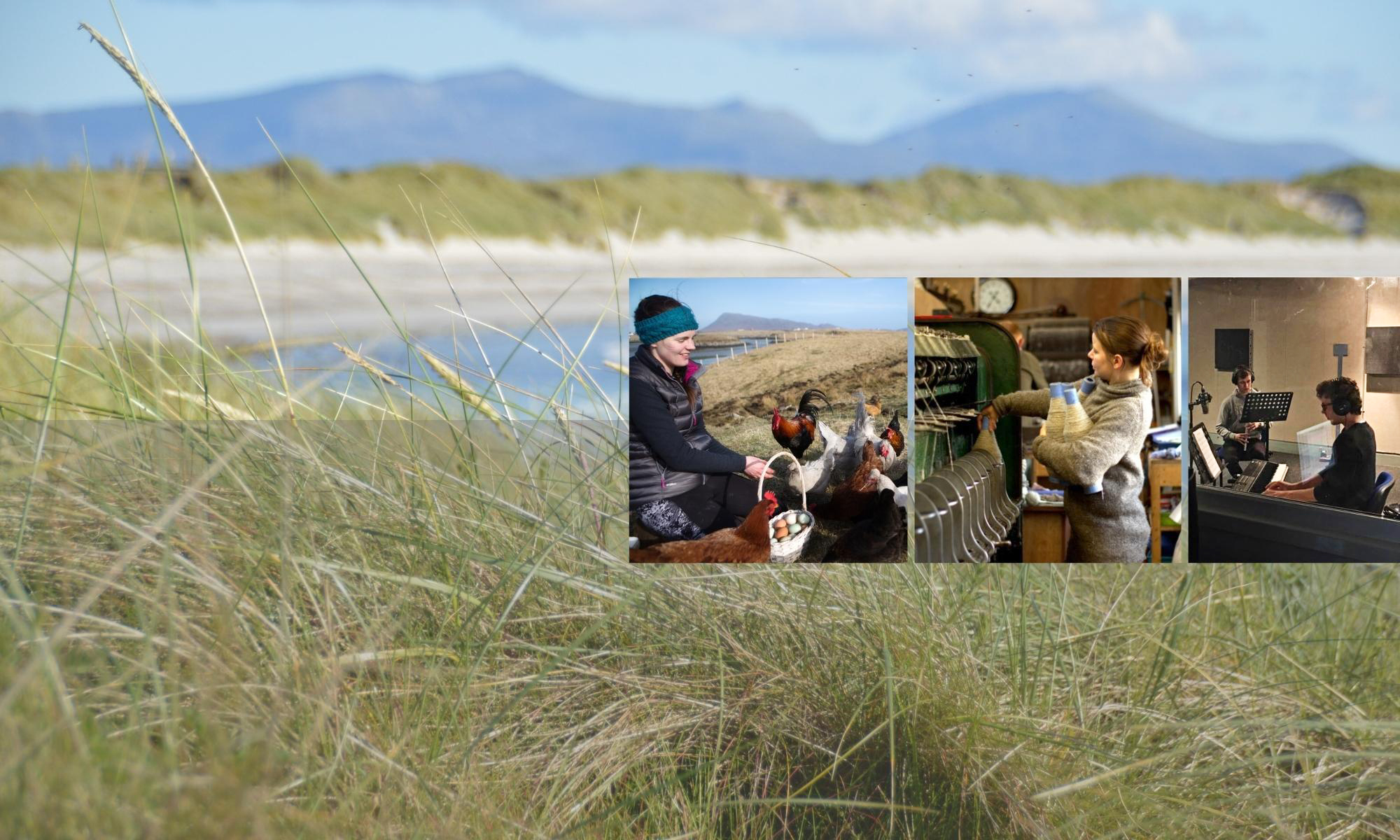by Anna Karlsdóttir, Nordregio and University of Iceland

Once upon a time, more precisely in the 1970s, the Nordic countries experienced an untypical demographic trend compared to the decades pre and post World War 1 and 2. A movement of people were driven by their desire to settle in less densely populated areas.
Let’s look to Sweden where it was called the “Green Wave”. The reason was lifestyle choices that led to an exodus from larger urban areas to smaller villages in rural areas or the countryside. This put a halt to depopulation of smaller villages, villages that had until then in the 20th century been gradually depopulated, with an increasing number of people moving for a variety of work opportunities to larger urban areas and cities.
Today many countries are experiencing a renewed interest in rural living in the wake of the Covid-19 pandemic. Since the start of the pandemic, anecdotes have been shared across countries of people from cities ‘escaping’ to rural areas, to access rural assets like affordability, space and natural amenities. In some instances individuals have relocated to a seasonal residence during lockdowns and stay-at-home orders. In other cases, highly educated ‘knowledge workers’ who have shifted to remote work during Covid-19 are moving to rural areas, again driven by the search for more space, greater affordability, natural amenities, and a different lifestyle.
This “retreat to rural” can certainly bring opportunities, including demographic and economic growth, diversity, new ideas, and new networks. Some rural communities and provinces are even looking to attract so-called “digital nomads” to work from rural areas. However, not all rural communities can capitalise on this ‘retreat to rural’. Access to high quality, reliable broadband is essential for working from home and this is a significant challenge for many rural communities, for example across Atlantic Canada, Scotland and parts of Nordic countries.
Swedish media is demonstrating the emerging trend that Covid-19 has directly enhanced. One of the largest newspapers in Sweden (DN) has reported on young families moving from Stockholm to smaller more peripheral places. Young families are looking for more spacious facilities outside of cities where they can combine work and family life, after almost 40% of working age professionals were sent home to work. Persistently booming urban house prices, expensive flats with smaller living areas in dense urban settings and the move to home for work have created a push to rural areas.
In the peripheral region of East Iceland, no house or apartment is available for sale. If any is put on the market in the area of Egilstaðir, Fellabær or Fljótsdalur, it is sold within the hour. And there are reports of people normally working in Norway and Denmark who have moved to the Faroe Islands with much fewer Covid-19 restrictions because they can work remotely.
In the Highlands and Islands of Scotland a significant trend of “moving house from urban to attractive rural areas is being identified – in part due to the increased need or scope for home working” (see here, p.9 and here, p.7). There is significant evidence from both Scotland and Ireland that house prices in some rural areas are rising sharply as urban residents seek to shift to rural areas.
The main contours for this change emerging in the Nordic countries are twofold. People are moving out of the large cities to the edge of the city, or frontier to the countryside. And people are moving to a greater extent to municipalities in rural areas that have an attraction value. However, it is probably premature to see how and if this will be a dominant or persistent trend in counter-urbanisation.
The important attraction values are natural environment, affordable housing, doing more flexible work and achieving greater work-life balance. All over Sweden there are abandoned farmhouses, often called ‘torp’ (e.g. here and here). In the South of Sweden they have been popular for decades among Danish families who acquire a renovation project and a second home, all at once. Now it seems that Swedes are starting to love to buy into some kind of rural dream or attraction value.
One manifestation of this shift is narratives of rural living through social media exposure that counteract the very well rooted and at times tiresome idea that rural areas, however diverse, are just places of population decline and meager opportunities. The other new element is that these narratives are projected with visual images, photography and video clips, especially on Instagram. Narratives in text are not as influential as pictures or other visualisations. This can be identified as a shift in the way narratives are mediated in favor of rural living.
What is interesting here is that myriad different groups have emerged. Conscious of the multiple different groups on Instagram, here I will take my point of departure in a Swedish Instagram account/group called “Landsbygdsdröm”. The word in Swedish refers to a dream, but it does not fully translate into English, because it can also imply an aspiration that has come true. The stories are often told by young families who have chosen a lifestyle shift where tradition and innovation mix. They are making their mark by taking care of dilapidated houses or abandoned farmhouses. What the narratives focus on is the look after renovation, which is an outcome of nurturing craftmanship and their role as custodians of heritage value within the rural environment. Their currency is creativity and a longing to make the countryside their new home.

But what does this really mean? Is it an indication that values of life, a sharper sense of the climate emergency, a need for a slower pace of life, and a sense of needing to live on the land are on the increase? Many of these families talk about how they not only manage to make their new homes more habitable but how they long for and realise their aspirations for growing more of their own food, how they can combine work and family life better, and how they can shape and rule their own life to a larger extent than earlier by venturing into new horizons for work and living.
It is an exciting time from so many perspectives. These settlers and change-makers contribute to increasing the attraction value of heritage houses, to beautifying the countryside and revitalising the social environment. And the benefit to them may be leaving behind a stressful life, unsubscribing from the culture of pervasive urgency.
Are the twenties of the 21st century the new 70s of the 20th century? In what sense does this address the need to redefine peripheralities? There is definitely more to this than the houses available. See more at https://www.instagram.com/landsbygdsdrom/, and a myriad of other Instagram narratives supporting these rural lifestyles.
One recent post from Terese, who is not among the newcomers, though expresses this clearly (first in English translation; the Swedish original text follows below; see @terese_bengard)
To me, at least, it was love at first sight. I fell for this incredibly beautiful place. I also fell for the feeling of security, to be seen but also needed. The year was 1999. The place is Ragunda municipality. And I have had the privilege of being able to live there ever since.

The paradox was that I left a place that was ranked as “best to live” to go to a place that was worst on that list. My opinion was the opposite. And so began the “struggle” to change the notion that only urban places are the ones that count.
Today I have the opportunity to work with what I am passionate about. Just so that places like these will get what they deserve. A road that can be ridden. Good connection. A school in the immediate area. An ambulance. That the police come when you need it. That you can afford to renovate the rural farm, which is the rural arena for culture and an important meeting place. That one should be seen in the media world. To be counted. Yes, you get it. That places that are not big cities should have the same opportunities. Good conditions. Development opportunities and above all not devalued.
In the city, you take a lot for granted. As in the countryside and in smaller towns, it is just as obvious that the countryside people have to fix themselves. At the same time, there is a perception that “all contributions” go to these places. It’s not true. Slowly but surely the picture is changing and I am very happy about it. Part of that work has been to produce our “Balance Reports” which precisely report how the distribution of resources between locations is. And now the podcast we started: All of Sweden talks where I have the privilege of talking to interesting people about these issues on a deeper level. [English readers can get a good sense of the talks using web-based translation tools, and about the balance reports here].
Above all, I can now to an even greater extent work from home (the pandemic has had some positive consequences) as more meetings take place digitally. It improves the chances of being able to live and work throughout Sweden, but also because I can more often take a lunch walking in this wonderful place on earth.”
“För mig var det i alla fall kärlek vid första ögonkastet. Denna oerhört vackra plats föll jag för. Pladask. Men också känslan av trygghet, att vara sedd men också behövd. Året var 1999. Platsen Ragunda kommun. Och jag har haft förmånen att kunna bo där sedan dess.
“Paradoxen var att jag lämnat en plats som rankades som ”bäst att bo” till en plats som låg sämst på den listan. Min uppfattning var tvärtom. Och så började ”kampen” om att ändra uppfattningen att bara urbana platser är de som räknas.
“Idag har jag möjligheten att jobba med det jag brinner för. Just för att platser som dessa ska få det som de förtjänar. En väg som går att åka på. Bra uppkoppling. En skola i närområdet. En ambulans. Att polisen kommer när man behöver det. Att man har råd att renovera bygdegården som är landsbygden arena för kultur och en viktig mötesplats. Att man ska synas i den mediala världen. Att räknas. Ja, ni fattar. Att platser som inte är storstäder ska ha samma möjligheter. Goda villkor. Utvecklingsmöjligheter och framförallt inte nedvärderas.
“I stan tar man mycket för givet. Som i landsbygderna och på mindre orter det är lika självklart att bygden folk själva ska fixa. Samtidigt som det finns en uppfattning om att ”alla bidrag” går till dessa orter. Det är inte sant. Sakta men säkert håller bilden på att ändras och jag är väldigt glad över det. En del i det arbetet har varit att ta fram våra ”Balansrapporter” som just redovisar hur resursfördelningen mellan platser är. Och nu podden vi startat: Hela Sverige pratar där jag har förmånen att samtala med intressanta personer om dessa frågor på ett djupare plan.
“Framförallt kan jag nu i ännu större utsträckning jobba hemifrån, (pandemin har haft vissa positiva följder) då mer möten sker digitalt. Det förbättrar chanserna att kunna leva och bo i hela Sverige men också för att jag oftare kan ta en lunchpromenad på detta underbara plats på jorden.”


Thanks for noticing our project Landsbygdsdröm which is associated with finding a new future on the countryside. We are strongly connected with rescuing abandined houses ”Jag räddade ett ödehus!” with nearly 35000 people who is sharing advices how to restore a house, often in bad condition. With this we try to inspire and to help people